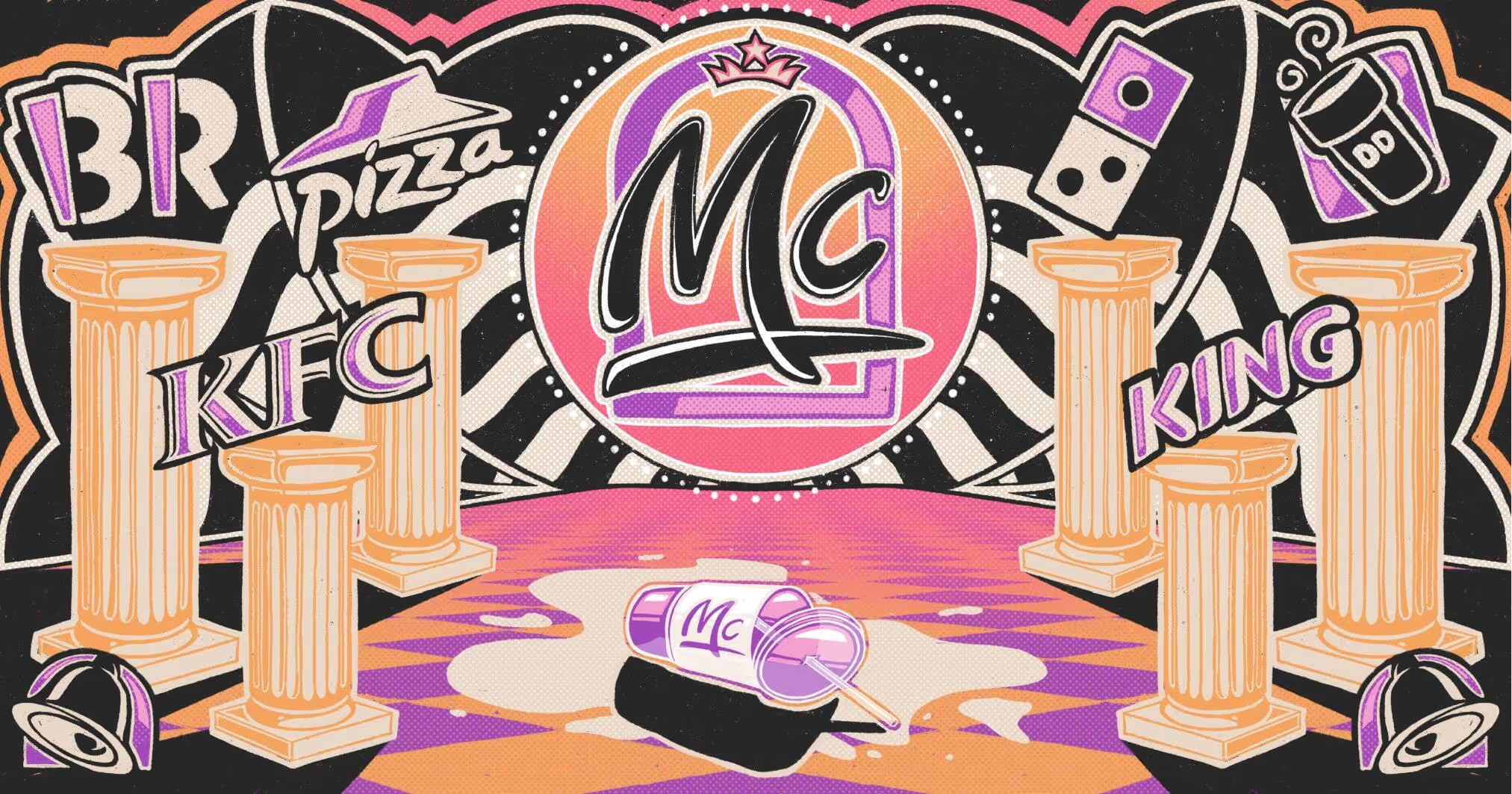Although gold has been a store of value and a medium of exchange for centuries, recent economic uncertainty has left some investors rushing back to the OG of precious metals.
And it’s not just hardcore Spandau Ballet fans either.
This renewed interest has shone a light on modern gold miners, with investors searching high and low for the best gold mining stocks on the market. In the UK, the share price of gold stocks, alongside the physical gold spot price, might be carefully watched by investors hoping for long-term gains or a potential short-term hedge against volatility.
But is gold actually a safe haven asset? Is gold an inflation hedge? Is it better to buy gold, or stock in a gold miner? Are gold ETFs a good investment? Let’s get into it.
How to invest in gold
No longer do you have to wade waist-deep in far-flung rivers panning for gold. There are an increasing number of options right at your fingertips for exposure to the yellow metal.
Although it’s a widely-valued material, owning gold itself has a few problems. The main ones are the lack of portability and the fact you’re responsible for keeping it safe. It’s difficult to transport and move your gold, and keeping stockpiles at home is just as risky as storing your life savings under the mattress. And that’s all before we even think about insuring it all.
This is why it tends to be larger entities such as the Federal Reserve in the US and The Bank of England (BoE) in the UK who own physical gold. Right now, the BoE holds around 400,000 bars of gold, worth about £200bn.

However, if you’re not a central bank with giant vaults, the more sensible alternative could be to invest in gold mining stocks, physical gold ETFs or other commodity stocks with indirect exposure to the gold price.
Is gold better than gold stocks?
The gold vs gold stocks is a debate that still rages on.
Realistically, owning gold industry stocks is much more practical than purchasing and storing the physical commodity. And in most cases, the reason why gold is valuable translates to gold industry stocks too.
Many consider gold to be a commodity that can maintain its worth in relation to fiat currencies (such as the pound or the dollar), which is partly why it’s so sought-after. The spot price of gold hasn’t always supported that assumption though. Over the last 10 years, there have been periods during which the price of gold declined relative to the pound.

Past performance is not a reliable indicator of future returns.
Source: FE, as at 21 October 2022. Basis: bid-bid in local currency terms with income reinvested.
This isn’t to say physical gold is better or worse than an investment in the stock market, for example. The value of your investments in the market can go down as well as up too.
It is to say, however, that gold’s growing value is not a guarantee.
Nor is its ability to flourish during periods of high inflation. This year, gold prices have tumbled since their March peak - so much so, they’re on the verge of entering bear market territory. So if you’re considering investing in gold, investigate the possible investment with as much scrutiny as you would if it were an investment in stocks or shares too.
Pros and cons of investing in gold
Breaking down the possible advantages and disadvantages of investing in the asset can help you decide whether gold, or investments related to gold, are right for you.
The following list offers some examples of the pros and cons of investing in physical gold compared to stocks:
Pros
- The performance of your investment is directly linked to the UK price of gold.
- Owning the actual commodity can be a useful way to diversify your portfolio.
- Over certain time periods, gold has been a good hedge against inflation.
Cons
- You may have limited options for buying and selling your gold.
- It’s likely your gold will be managed and stored by a third party, which can be costly.
- The price of gold can underperform other precious metals or the best gold mining stocks.
- Direct gold ownership doesn’t come with the same tax efficiencies as stocks in tax-wrapper accounts, like a stocks and shares ISA or SIPP.
- Gold doesn’t provide an income, so you can’t take advantage of compound growth over the long term.
Read more
The (more realistic) ISA millionaire
Dividends and your stocks and shares ISA
Advantages and disadvantages of gold stocks
Here are some of the major benefits and drawbacks to keep in mind when it comes to searching for the best gold mining stocks and other gold-related investments:
Pros
- It can be a straightforward and inexpensive process to buy or sell shares if you’re using a commission-free investing platform and if any other platform charges are low.
- Depending on your investment, you may be entitled to dividends which you wouldn’t get with physical gold.
- If you have a stocks and shares ISA or a SIPP, you’ll likely be able to make your gold stocks tax efficient.
Cons
- You don’t physically own gold and your investments are likely subject to more variables aside from just changes in the spot price, like how much gold a miner actually gets out of the ground.
- Share prices of gold stocks can still go down, even if the spot price has gone up as you’re still exposed to mining operations and the whims of the stock market.
- There can be international or regional geopolitical risks that apply to gold miners, like mine licensing laws.
Do gold stocks go up in a recession?
As we’ve said, gold is sometimes a sought after investment during recessions, based on the notion that it can sustain its value as a ‘safe haven’ during periods of stock market volatility.
Some gold stocks have performed well during past recessions, but past performance doesn’t dictate future results. Even the best gold mining stocks from years past may not hold up as recession-proof stocks during the next recession because there are so many external factors to take into account.
If you’d like to read more of a deep dive into the topic, you can read our thoughts on whether gold is a good investment and also the link between gold and inflation.
How do I buy gold on the stock market?
Some of the most popular ways to invest in gold through the stock market include:
- Gold mining stocks and ETFs.
- Physical gold ETCs (exchange-traded commodities), for example, the Royal Mint Physical Gold ETC (RMAP).
- UK gold ETFs, which track the price of gold rather than hold the actual metal.
- Other stocks linked to gold miners, mines or equipment.
Junior gold mining stocks
When it comes to gold miner stocks, some are ‘junior miners’. That means the company exclusively mines gold, as opposed to more mature peers who might refine it too. Often, they’re still in the development or exploration phase, seeking land with the hopes of unearthing the precious metal.
In the meantime, if the company isn’t producing revenue, then it’s loss-making and a high-risk investment. That’s why some junior gold miners are also penny stocks, awaiting the opportunity to prove themselves.
These investments are higher risk because of the massive investment in equipment, machinery and infrastructure required to construct a mine. That is if they can even find the right site to build it on. So the potential of a junior miner being unable to extract the metal is a much larger risk than that of an established miner being able to sell their extracted gold.
Are these the best gold stocks?
Before we delve deeper into the gold miners and related companies, it’s important to point out that the investments discussed below aren’t necessarily the best gold mining stocks available.
Instead, we’re going to be looking at some of the most popular stocks on the Freetrade app to give you some insight into the minds of like-minded investors. Although the popularity of these shares in the gold industry might serve as a useful launch pad for your own research, they don’t tell us everything. Be sure to do your own research before making any decisions on the best gold mining stocks for your portfolio.
10 gold stocks on Freetrade
This list contains physical gold stocks, UK gold ETFs, gold miner stocks, and other businesses linked to gold and other precious metals.
Here are 10 of the most popular gold industry stocks on Freetrade in 2021.
Source: Freetrade 2021
Value gold mining stocks
In a similar way that the best gold mining stocks can be subjective, so too can be the question of valuations.
Pinning ‘fair’ valuations onto stocks isn’t an exact science, it’s more like some analysis with educated assumptions based on the available data.
Though, the value of gold mining stocks can sometimes be more straightforward to assess than tech software stocks, for example. Because the businesses tend to generate a cash flow based on tangible assets like gold produced from gold mines.
You can check out our guide on how to value stocks for a step-by-step on how to get started.
We’ll dive a bit deeper into some of the most popular stocks listed above, taking a look at the biggest names and the newer players in gold too.
Rio Tinto (RIO)
This is one of the largest UK-listed firms and could still present a possible value opportunity.
At the time of writing, Rio Tinto (RIO) is trading at a price-to-earnings (P/E) ratio of 5 and a price-earnings-growth (PEG) ratio of 0.15, relatively low compared to its peers, which could signal there’s value to be found here.
A low P/E ratio means the share price is fair relative to the company’s earnings. The PEG ratio on the other hand takes into account future earnings growth estimates, and ratios lower than one can indicate the stock is undervalued. However, the price-book (P/B) ratio of 1.71 isn’t quite as appealing from a value perspective. The P/B ratio measures the company’s market valuation against its ‘book value’, which is the value of a business according to its financial statements. RIO’s P/B score is at a fairly healthy level, but doesn’t quite scream undervalued.
RIO has not been immune to low economic confidence that’s been trickling down throughout the market. After what appeared to be surging interest and a steadily rising share price at the beginning of the year, the stock has taken a tumble over the last six months.
Barrick Gold (GOLD)
Barrick Gold (GOLD) believes its share price is currently undervalued, but we hope it goes without saying that you shouldn't just take management’s word for it.
Barrick’s reasoning that the stock is ‘delivering value’ is because the current share price doesn’t fully reflect its $1bn share buyback scheme, operating cash flow, and ability to maintain its quarterly dividend against a gloomy economic backdrop.
While the firm could theoretically cancel or renege on its buyback scheme, and dividends are never guaranteed, there’s also no surefire way of knowing if its share price will reach the value Barrick believes it should. That’s why, as an investor, you need to be confident in the investment case before you take others’ (even if they’re the people at the helm of the company’s) word for it. So far this year, this gold miner has been trending downwards.
Hycroft Mining (HYMC)
The sole focus of this junior precious metals miner right now is its Hycroft mine in Nevada which it hopes will produce gold over the next 30 years.
At the time of writing, with a share price below $1 and a market cap below $300m, Hycroft Mining (HYMC) falls within penny stock territory.
But just because it looks cheap doesn’t mean it’s necessarily a good deal. Penny stocks are not just some ‘get rich quick’ scheme. They actually deserve an extra layer of scrutiny before they earn your investment too.
That’s because penny shares tend to represent small companies that have fewer regulations and reporting requirements. These stocks sometimes trade OTC (over the counter) rather than on a major exchange as well, which often means they have lower liquidity and higher volatility.
HYMC only went public in 2018 and has a decent stockpile of gold already. But, much of it is low-grade ore that needs separation from sulphide, which can be a technical and costly process, so it’s not the same standard as something fancy like Royal Mint Bullion gold.
VanEck Junior Gold Miners UCITS Acc. (GJGB)
Although this UK gold ETF didn’t make it into the most popular gold industry stocks, this junior miner ETF tracks gold mining stocks within the MVIS Global Junior Gold Miners index.
The VanEck Junior Gold Miners (GJGB)’s index also has some exposure to junior silver miners which provides an extra level of precious metals diversification within a single investment.
This gold ETF includes the likes of Yamana Gold (AUY), Kinross Gold (KGC), and Endeavour Mining (EDV) among its major holdings. But, keep in mind that using an ETF doesn’t completely remove all the risk of investing in junior gold miners. If anything, you are getting exposure to a wider array of risky investments, and when it comes to new and budding companies, selectivity and research are always key.
Is it better to buy gold or a gold ETF?
While owning gold through an investment vehicle like an ETC is a modern way to have physical gold ownership at your fingertips, the share price will be strictly tied to the UK price of gold.
That means there are fewer variables involved in the share price change of your investment. But just because there are fewer moving parts doesn’t inherently make it less risky.
There are a number of UK gold ETFs that can provide more diverse exposure to the gold industry. The share price performance may not just be down to the price of gold. If the gold ETF contains companies that own gold mines, how efficiently the gold miner runs its operation can positively or negatively impact your returns.
Which, again, isn’t inherently going to give you a better buffer from market changes.
And a downside to the added diversity of a gold ETF is that there will likely be ongoing fees with the exchange-traded fund. Also, the share price performance may not just be down to the price of gold.
How to invest in gold
If you’ve considered the investment risks and weighed them up against the potential benefits of investing in gold industry stocks, here’s a straightforward step-by-step guide explaining how to invest:
- Compare brokerage accounts to decide which one best suits your investing platform needs. Our investment fees calculator will help you understand the charges you could face.
- Open a stocks and shares investment account with your broker of choice. You might want to factor in tax efficiencies and consider whether a GIA, stocks and shares ISA or SIPP could help. Once you’ve decided, make your first deposit.
- Research the type of gold mining stocks, UK gold ETFs, or physical gold ETCs you want to invest in.
- Make sure the gold stock fits in with your overall investment strategy, portfolio diversification, and risk assessment, and that the rest of your finances are in a healthy position.
- Select how much of the precious metals stock you’d like to invest in. You can buy fractional shares on the Freetrade app for US shares, so you don’t have to purchase a full share if it's outside of your budget, or you’d just like to start with a smaller investment and build up depending on its performance.
For some more guidance, you can read our in-depth guide on how to buy stocks and shares.
As a commodity-based investment, the performance of stocks and shares within the gold industry can be volatile, especially over shorter periods. This is a good reason to consider the benefits of long-term investing when making your decisions. And while gold might play an important part in your diversified portfolio, putting all of your eggs in one basket (even if that basket is 14-karat gold) is never a good idea.

Build your financial knowledge and be in a better position to grow your wealth. We offer a wide range of financial content and guides to help you get the insight you need. For example, learn how to invest in stocks if you are a beginner, how to make the most of your savings with ISA rules or how much you need to save for retirement.
When you invest, your capital is at risk. The value of your portfolio can go down as well as up and you may get back less than you invest. This should not be read as personal investment advice and individual investors should make their own decisions or seek independent advice. Past performance is not a reliable indicator of future results.If you are unsure whether a product is right for you, you should contact a qualified financial advisor.Freetrade is a trading name of Freetrade Limited, which is a member firm of the London Stock Exchange and is authorised and regulated by the Financial Conduct Authority. Registered in England and Wales (no. 09797821).

.avif)










